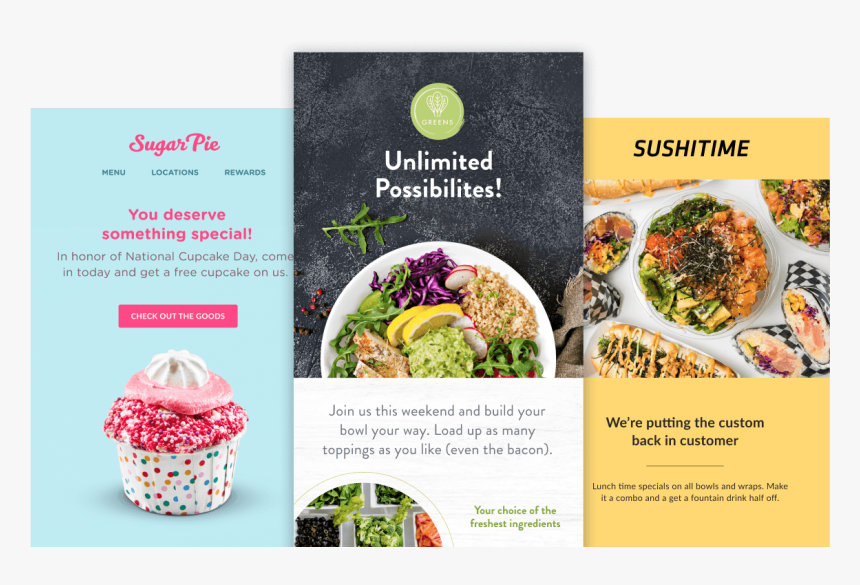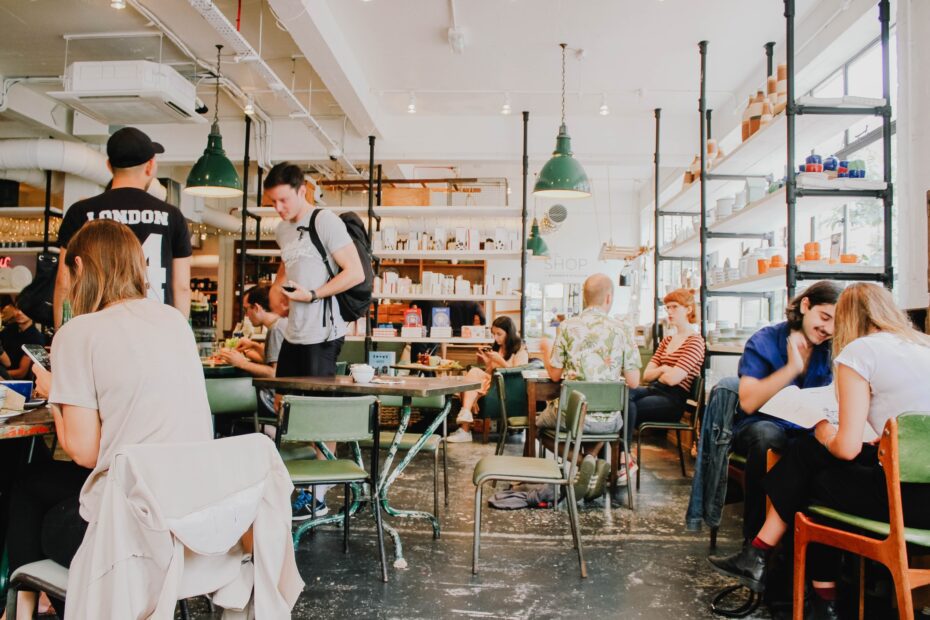Traditional marketing methods are becoming increasingly ineffective as customers become more digitally connected.
As a result, restaurant and cafe businesses have turned to digital marketing.
Restaurants are also discovering that traditional and digital marketing strategies can complement each other in many ways.
This article is going to provide an outline of six digital marketing strategies for restaurants and cafes that you can use to promote your business.
1. Content-based Marketing Strategy
Content marketing is a way to create and distribute valuable, relevant, engaging content to attract and retain customers to build trust and credibility.
Here are some useful tips for creating an effective content marketing strategy for your cafe.
Content marketing has become more important than ever because:
- It shows potential customers that your food business is trustworthy.
- Content marketing makes it easier to market your cafe or restaurant because you can create more content in less time (through outsourcing design and copywriting services).
- You can build relationships with both potential and current customers by providing them with value through the content you provide.
Content-based Marketing Strategy Tips for Your Restaurant or Cafe
Make sure that your content is very relevant to your target customers. It is important to create content that will be useful to the visitors of your website.
When you are creating content, think about how this could be used in other channels as well such as print marketing and social media marketing.
Make sure the quality of your content is high and up-to-date (remember to update it regularly).
Content should be interesting to read and not just be a list of keywords.
Be sure to give your readers value.
If they won’t find the content engaging, they will leave and probably never come back.
Make sure you have a blog, which is updated regularly with fresh content (and has been for several months).
And you’re linking to it from more than just the main pages on your website to ensure that blog posts are linked with the rest of your site.
2. Email Marketing Strategy
Email marketing is a strategy for delivering content regularly and consistently through email newsletters and delivers an instant way for restaurants to do business with customers.
The key benefits of email marketing are:
You can track which emails your readers like and dislike.
You can send out monthly specials to customers without wasting a lot of time and money on printing advertising material.
Email Marketing Strategy Tips for Your Restaurant or Cafe
Focus on building an e-mail list of people who’ve opted in to get your emails.
Make sure you have an opt-in form on your website and in print material.
Email marketing is not spammy if you are providing value to those who subscribe.
Talk about the benefits of subscribing, rather than just asking them to sign up for updates or special deals (this will make people less likely to want to sign up in the first place).
Don’t just send out a generic e-mail and hope for the best. Take time to generate ideas about what you want to say, then research and test different approaches.
Try including reader testimonials or other input in your emails regularly.
This will help personalize your email campaign and keep it from feeling like you’re just sending out the same material every time.
Be sure to segment your email list so that you can send targeted offers and information to different groups of people.
For example, if someone has ordered food in the past from your restaurant or cafe, these customers could be given a discount on their next order or a special deal.
It is important to regularly email your list as well (how often depends on the customer base, but once a week is common).
If customers have signed up for emails from you and don’t hear about you over time, they will eventually unsubscribe. If this happens frequently, you can lose lots of potential customers.

3. Social Media Marketing Strategy
Social media is an excellent channel for restaurants and cafes to connect with their customers and fans.
By using social media, restaurateurs can find more potential customers, keep in touch with current customers and engage them regularly.
This allows them to build relationships with their audience. As you become better friends through social connections, you can also build trust and rapport with them.
Social Media Marketing Strategy Tips for Your Restaurant or Cafe
Make sure you have a presence on popular social media sites such as Facebook, Instagram, TikTok, Twitter, Pinterest, and YouTube (these are the most important).
Make sure your pages on these sites have high-quality information (and visuals) that is appropriate to your restaurant’s style, clientele, and menu.
Be sure to respond to comments and questions from customers promptly.
Offer deals regularly through social media for people to connect with you (for example, “like” our Facebook page or follow us on Twitter to get 20% off your next meal).
If possible, offer some sort of exclusive deal for your social media followers only.
Suggested Reading: Facebook Marketplace: 8 Ways to boost your sales
4. Online Review Strategy
Online reviews are an essential part of restaurant and cafe marketing.
These online reviews help establish a restaurant’s credibility in the city, which is very important to potential customers today.
Value-added online review strategy tips:
Make sure you have decent printed material on your business information sheets and menus about your restaurant’s or cafe’s history.
Allow people to write a review of your food on Google, but refrain from trying to solicit positive reviews (this will appear unprofessional).
Ask customers who have left online reviews a few questions that can help improve the quality of future reviews.
This could be new menu additions, improvements you have made since reviews were written, or other ways to improve your business.
Posting positive review quotes on your social media sites can increase the chances that more people will want to leave a review (as long as they are real).
5. Local SEO (Google My Business)
Local SEO is an essential tool for restaurants and cafes that want to attract customers from the local area.
Restaurants can appear on Google Maps and mobile search listings, which allows more people in the city to see that your restaurant or cafe exists and view some basic information.
Being listed as “on the map” or “local listing” appears to be very important in the way Google appears on mobile devices.
If you are not showing up on a map or local listing, potential customers may not even see your business information and will have no reason to click through to your website.
Tips for Local SEO for Restaurants and Cafes:
Make sure your name, address, and telephone number are consistent across all the different local listings you want to appear on.
Use your full business name rather than a nickname (e.g., “The City of Hamilton” instead of “Hamilton”), and make sure that everything is spelled correctly.
Make sure you have high-quality photos on Google My Business, Facebook, Instagram, etc.
Verify your business on Google My Business (note that the process is very simple, and it can take less than 5 minutes).
Bonus: Today, people want to see more of a personal “story” behind a restaurant and cafe before they decide to visit it.
I believe that restaurants and cafes (especially independent ones) should be more transparent about who they are, what they do, and why they do it.
Consider crafting a “story” (in your own words) about how you got into this business and why it’s the right fit for you (customers like to see that there are real people behind a restaurant or cafe).
I hope this article has helped you think of some new strategies to grow your restaurant or cafe through digital marketing.
Good luck!

Ali is a digital marketing blogger and author who uses the power of words to inspire and impact others. He has written for leading publications like Business2Community, Inc. Magazine, and Marketing Profs. When not writing, he enjoys spending time with his family.
